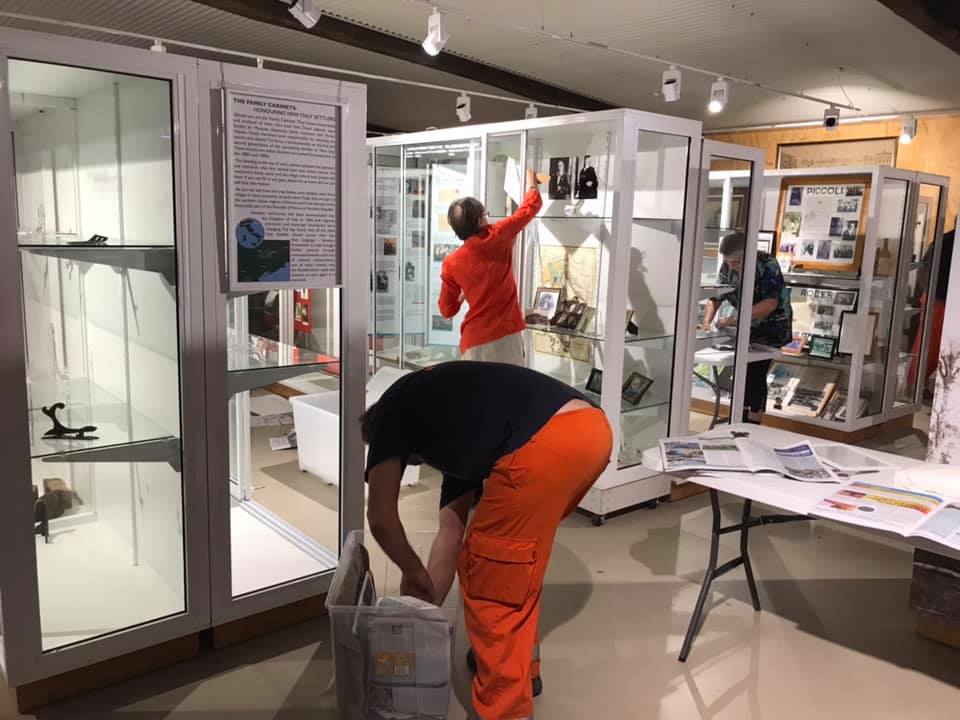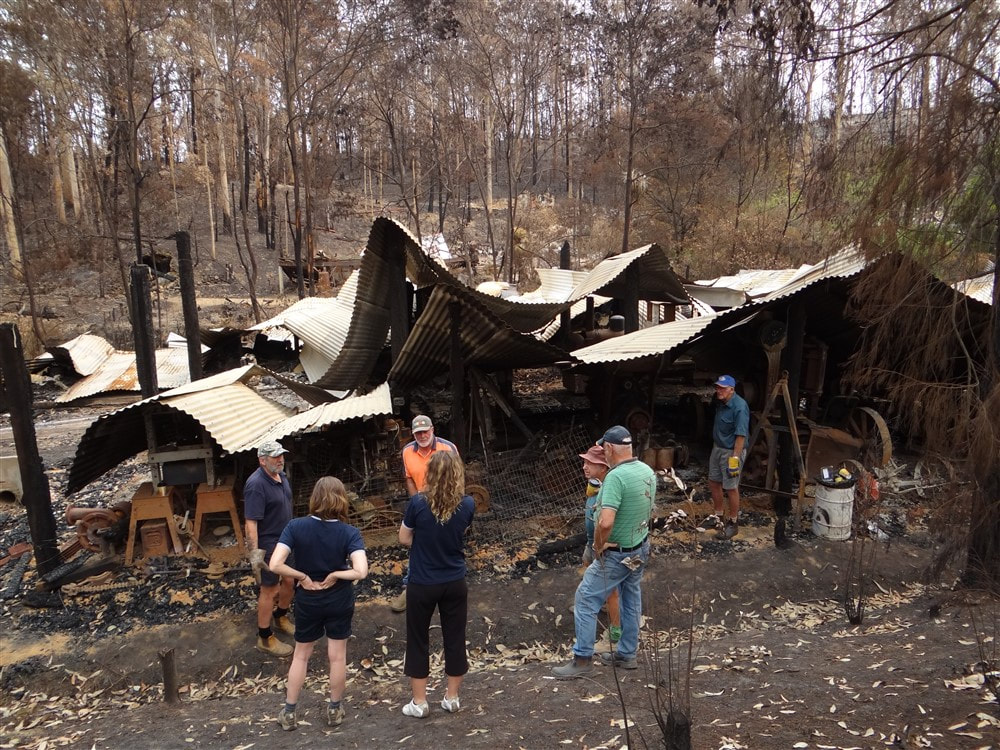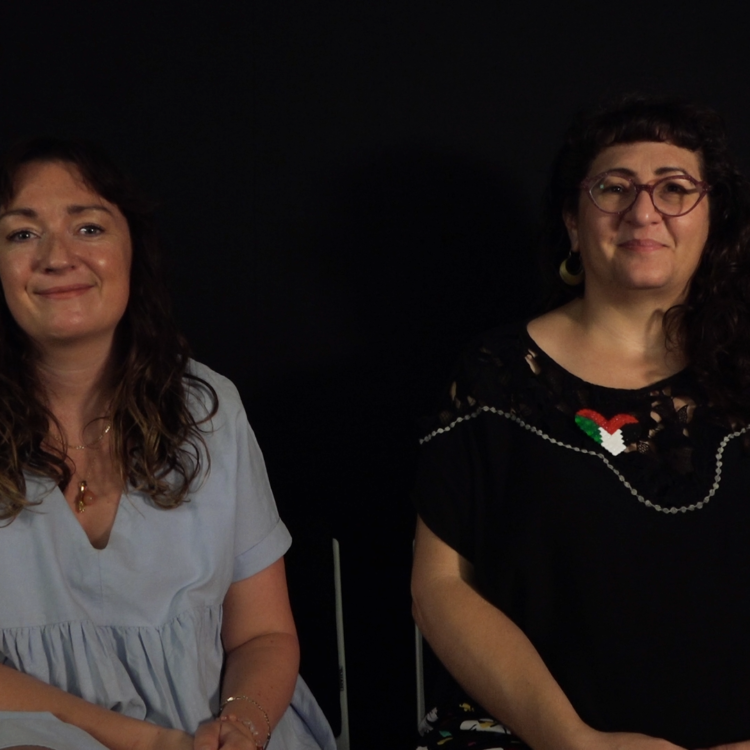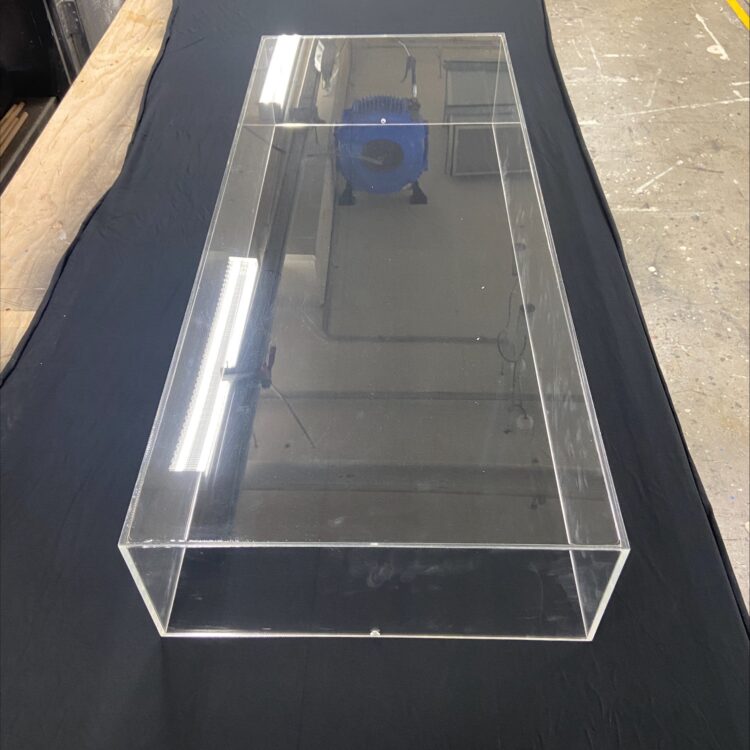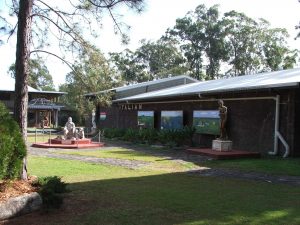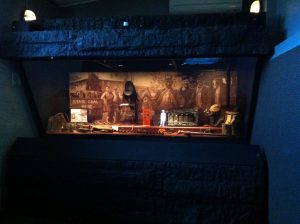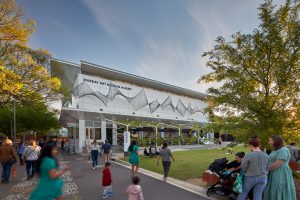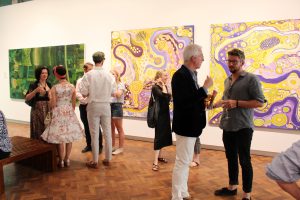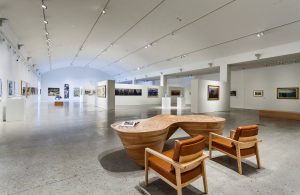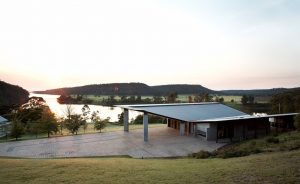With devastating fires impacting on communities in much of NSW since September 2019, M&G NSW staff have been busy offering support and advice to museums and galleries impacted.
In late 2019, M&G NSW staff responded to emails and calls from New Italy Museum (near Ballina, Northern Rivers region) raising concerns about encroaching fires that had burnt up to the perimeter of the site. However, through the efforts of local fire brigades and some extraordinary local volunteers, flames were prevented from engulfing the museum. Most of the collection was removed from the museum site and taken to a safe place as the fear of loss was so high. Lithgow State Mine Museum also came under attack, with the same sustained effort by firefighters and museum volunteers ensuring only minor damage to the site.
In early 2020 with concern about the fires that were out of control on the South Coast, M&G responded by contacting Museum Advisors to check the status of museums and whether any resources might be needed for post-disaster recovery. We also used social media to remind people of resources that are available on our website and on other websites such as the AICCM’s brochure After a Fire .
To date, we have only heard of one museum lost to the fires, it was reported that MATAMA (Mogo Machinery Museum) was destroyed. Reports of museum collections being impacted from smoke, dust and ash are however wide-spread and post-disaster recovery will require mass cleaning efforts. The Museum Advisor for Bega Shire Valley, Angela George, has been in constant contact with museums in the South East History Group, and has reported that so far, most museums are safe and collections secure. Many of the museums in this area participated in a workshop on disaster prevention, preparedness and recovery held in late 2019. This timely workshop was funded by an M&G NSW Skills Development Grant provided through Create NSW.
Several public galleries have also reported smoke related collection care issues and concerns for the safety of artworks on loan, as part of touring exhibitions. To offset risk, some closed doors to the public and others, such as Albury’s MAMA and the Goulburn Regional Art Gallery, offered their facilities as safe (and cool) places for people evacuated and impacted more broadly by fire and smoke.
Blue Mountains Cultural Centre is looking at ways that programming decisions can offset risk during summer months and Iain Dawson, director of Bega Regional Art Gallery distributed artmaking kits to Bega’s busy fire evacuation centre and has helped coordinate a local partnership with Headspace (with Regional Arts Fund support) to deliver workshops at mobile recovery centres across the Bega Shire. Bundanon Trust’s collection was evacuated and a long-established disaster response plan, staff training (and a much-appreciated firefighting effort from Regional Fire Service (RFS) volunteers ensured no damage to property.
Manning Regional Art Gallery, situated in Taree on the Mid North Coast reports that from early November their area was severely impacted by fires, with the first 7 day State of Emergency for NSW declared after fires devastated the region. While Taree itself was a refuge and was not directly impacted by the fires, roads were cut throughout the region and for the safety of staff and the public, the Gallery was closed for 5 days in a row, a first in its 30-year history.
After the most devastating week in November, the Gallery reopened and became a safe haven for those who had been impacted by the fires. The community used the safe and cool space of the Gallery to share stories, have a cuppa, debrief and weave stories of the area with Aboriginal elders as part of the Saltwater Freshwater Aboriginal Art Award and Cultural Object touring exhibition.
Early reports from fire affected areas indicate that going forward the key need will be for advice and assistance associated with the cleaning of objects, artworks and spaces. This may involve the purchase of appropriate protective wear (gloves and P2 dust masks), vacuum cleaners with HEPA filters, brushes and soot sponges.
The Australian Institute for the Conservation of Cultural Materials, AICCM, is coordinating a list of names of conservators who have registered to assist with post-fire clean-ups and it is preparing for distribution an updated resource on dealing with smoke damage. For assistance contact Michelle Berry, secretariat@aiccm.org.au, or visit the website. The Museum of Applied Arts and Sciences (MAAS) is distributing disaster recovery information to assist as required. They have kindly made their resource, All Is Not Lost: The Collection Recovery Book available to download.
M&G is also working with Local Government NSW to ensure that messages of support and assistance are widespread and targeted, where the need is greatest. We have also been encouraging local councils to consider allocating funds from federal government recovery grants towards cultural heritage, collection care, remedial programs and related need.
Our Create NSW devolved Skills Development Grants and Small Grants open on 3 February 2020. These grants can be used to fund workshops on disaster recovery (Skills Development grants) and disaster recovery projects (Small Grants) for volunteer-run museums.
Priority will be given to disaster recovery projects in 2020.
Further updates and avenues of support will be promoted as recovery efforts across communities gain momentum and the shock of what has occurred dissipates. Our thoughts are with families and communities that have suffered loss as they begin the task of rebuilding lives.
For further information and support don’t hesitate to contact our office and staff on;
Phone: 02) 9252 8300
Freecall for regional NSW: 1800 114 311
Emily Cullen – 02) 9339 9913
Tamara Lavrencic – 02) 9339 9908
Email: comms@mgnsw.org.au


